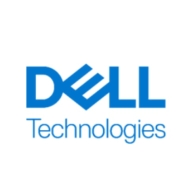

IBM Turbonomic and Moogsoft compete in IT operations management. IBM Turbonomic leads in resource management and environmental efficiency, while Moogsoft holds an advantage in IT incident management and noise reduction.
Features: IBM Turbonomic automates resource management and right-sizing, emphasizing smart analytics for efficiency, reporting, and planning tools. Its planning tool offers predictive scenarios for capacity management and workload placement. Moogsoft focuses on IT incident management with advanced correlation tools and AI-driven noise reduction, ensuring seamless event management and observability.
Room for Improvement: IBM Turbonomic users desire a more user-friendly interface and a full transition to HTML5 UI. Reporting and custom dashboard creation also need better navigation and functionality. Moogsoft requires enhanced integration options, improved dashboard visualization, and more frequent updates, especially for multi-cloud environments. Responsiveness in support requires improvement for complex hybrid cloud configurations.
Ease of Deployment and Customer Service: IBM Turbonomic is lauded for excellent customer service and responsive support in on-premises and private cloud setups, with hands-on assistance post-deployment. Moogsoft offers strong support but has lapses in responsiveness during critical issues, particularly in hybrid cloud configurations.
Pricing and ROI: IBM Turbonomic has competitive pricing with significant ROI from cost savings and resource optimization. Flexible licensing options accommodate scalability. Moogsoft offers cost-effective, enterprise-grade solutions with consumption-based licensing, enhancing scalability in environments with varying data volumes. Both products offer substantial ROI, each excelling in its domain—Turbonomic in resource management and Moogsoft in incident management.


IBM Turbonomic offers automation, planning, and right-sizing recommendations to streamline resource management, improve efficiencies, and optimize costs across virtualized environments and cloud platforms.
IBM Turbonomic is valued for its capability to optimize resource allocation and monitor virtual environments efficiently. It facilitates automated decision-making in VM sizing, load balancing, and cost optimization for both on-premises and cloud deployments. Users can leverage insights for workload placement, ensure peak performance assurance, and effectively right-size across VMware and Azure. The ongoing transition to HTML5 aims to improve visual and navigational ease, while expanded reporting features are anticipated. Opportunities for improved training, documentation, and integrations enhance platform usability and functionality.
What Are the Key Features?In finance, IBM Turbonomic aids in maintaining platform efficiency during market fluctuations. Healthcare organizations leverage its capability for resource optimization during high-demand periods to enhance patient care support. Retailers use it for planning in peak seasons, ensuring resources align with fluctuating demand to maintain performance continuity.
Moogsoft is an AI-based solution that ensures continuous availability and prevents downtime by utilizing machine learning and advanced correlation on your organization’s stack. Moogsoft detects incidents before they can escalate, notifies the proper response teams, and applies machine learning in order to understand patterns to help prevent similar issues in the future.
Moogsoft sits on top of an organization’s production stack and extends across automation, service management, log indexing, and notification tools. Algorithmic Noise Reduction automatically reduces event volumes to unique alerts without relying on rules, filters, or models. This enables teams to analyze all monitoring ecosystem events with no noise and no blind spots.
With Moogsoft extensive integration options, users can aggregate all their observable data into a single location and create automated workflows to detect and remediate incidents in third-party systems, ensuring their system remains unharmed. Moogsoft’s anomaly detection tools detect incidents as they emerge, allowing security teams to respond swiftly before they impact customers.
Teams can easily set up their own integrations using Moogsoft’s REST API and webhook. The solution provides guidance for each step, allowing users to import data from whatever tool they need with just a few mouse clicks.
Some of Moogsoft’s top features and benefits include:
Reviews from Real Users
Moogsoft stands out among its competitors for a number of reasons. A few major ones are its monitoring tools, its user-friendly interface, and its strong AI capabilities.
Vivek S., an O&M Lead at a communications service provider, writes, “The most valuable feature is the monitoring manager. Different components and different monitoring tools integrate with and send data to Moogsoft.
This is a user-friendly solution. It is very easy and very comfortable to use, with everything available on a single screen.
The AI component allows you to check previous cases and diagnose problems easily. It will show you what happened last time the same event occurred.”
We monitor all IT Operations Analytics reviews to prevent fraudulent reviews and keep review quality high. We do not post reviews by company employees or direct competitors. We validate each review for authenticity via cross-reference with LinkedIn, and personal follow-up with the reviewer when necessary.